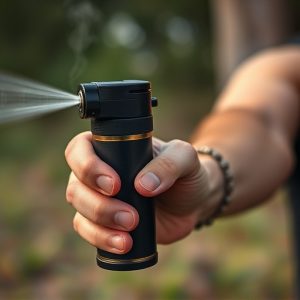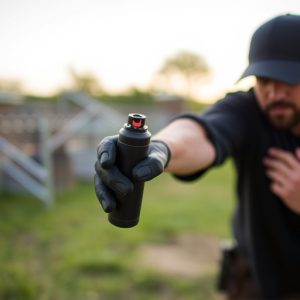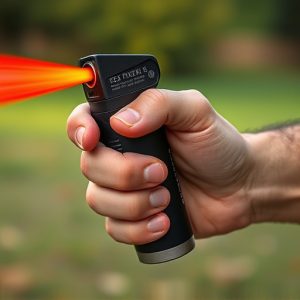Pepper Spray Laws by State: Understanding Riot Control Regulations
In the US, Pepper Spray Laws by State vary significantly due to differing cultural, legal, and polit…….
In the US, Pepper Spray Laws by State vary significantly due to differing cultural, legal, and political contexts. These laws govern possession, carrying locations, and usage circumstances of pepper spray, with age restrictions, permit requirements, and specific rules for civilians and law enforcement. Staying informed about these regulations is vital for compliance and public safety during civil unrest or violent situations, ensuring responsible use by all parties involved.
“Uncovering the Power of Pepper Spray: A Comprehensive Guide to Riot Control. In this article, we explore the essential tool for law enforcement and riot management—the inflammatory riot control spray dispenser. From understanding the basics and legal framework to a state-by-state review of pepper spray laws across the US, this guide is your comprehensive resource. Discover key considerations for effective riot control, including safety, training, and regulation. Unravel the intricate web of Pepper Spray Laws by State, vital for staying informed in today’s dynamic law enforcement landscape.”
- Understanding Pepper Spray: The Basics and Its Legal Framework
- State-by-State Review: Exploring Pepper Spray Laws Across the US
- Considerations for Effective Riot Control: Safety, Training, and Regulation
Understanding Pepper Spray: The Basics and Its Legal Framework
Pepper spray, also known as oleoresin capsicum (OC) spray, is a non-lethal self-defense tool designed to incapacitate individuals through irritation and temporary blindness. It works by stimulating nerve endings in the eyes, nose, and respiratory system, causing an intense burning sensation and coughing fits. While pepper spray offers a layer of personal safety, its use is governed by strict legal frameworks that vary significantly across different states.
Understanding Pepper Spray Laws by State is crucial for both individuals considering carrying self-defense tools and law enforcement agencies tasked with enforcing these laws. Each state has its own set of regulations dictating who can possess pepper spray, where it can be carried, and under what circumstances it can be used. These laws consider factors such as age restrictions, permit requirements, and specific rules for law enforcement officers and private citizens. Staying informed about these regulations is essential to ensure compliance and promote public safety.
State-by-State Review: Exploring Pepper Spray Laws Across the US
In the United States, pepper spray laws vary significantly from one state to another, reflecting diverse cultural, legal, and political landscapes. These variations impact how law enforcement agencies can employ and acquire riot control agents like oleoresin capsicum (OC), commonly known as pepper spray. Some states have stringent regulations that restrict or even prohibit the use of pepper spray unless explicitly authorized by law, while others maintain looser restrictions, allowing its use in specific situations.
A State-by-State review reveals a patchwork of regulations, with key differences centering on who can carry pepper spray (law enforcement only versus civilians), under what circumstances it can be used, and the types of pepper spray that are permitted. This heterogeneity underscores the need for individuals and law enforcement to understand their state’s specific laws to ensure compliance and safety during situations involving civil unrest or potential violence.
Considerations for Effective Riot Control: Safety, Training, and Regulation
When considering riot control strategies, prioritizing safety is paramount for both law enforcement officers and the public. The use of inflammatory riot control spray dispensers, such as pepper spray, should adhere to strict guidelines and regulations to mitigate risks associated with its deployment. Each state has unique Pepper Spray Laws that dictate the types of spray allowed, permitted uses, and restrictions on carrying and storing these agents. Staying informed about these Pepper Spray Laws by State is crucial for ensuring responsible and legal application of riot control measures.
Effective training plays a pivotal role in making sure law enforcement agencies employ these tools responsibly. This includes scenarios-based training to familiarize officers with proper usage techniques, minimizing risks, and de-escalation strategies. Regular simulations help officers maintain proficiency and adapt their approaches based on ever-changing circumstances. Moreover, keeping up with evolving regulations and best practices ensures that riot control tactics remain safe, ethical, and compliant.
In conclusion, pepper spray, a powerful tool in riot control, is governed by varying state laws across the US. Understanding the legal framework and leveraging considerations such as safety, training, and regulation are paramount for effective deployment. Knowing the specific Pepper Spray Laws by State ensures compliance and promotes responsible use, ultimately fostering public safety during tense situations.


